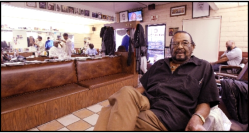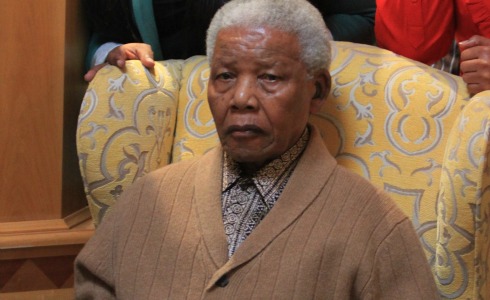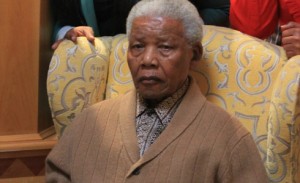 Some of the nation’s best and brightest professional and student minds in science, technology, engineering and mathematics converged on Washington, D.C. Feb. 7 for the annual Black Engineer of the Year Award, or BEYA, STEM Global Competitiveness Conference.
Some of the nation’s best and brightest professional and student minds in science, technology, engineering and mathematics converged on Washington, D.C. Feb. 7 for the annual Black Engineer of the Year Award, or BEYA, STEM Global Competitiveness Conference.
BEYA chairman Tyrone Taborn said the conference was conceived “to recognize and document the significant contributions” of Blacks in the fields of science, technology, engineering and math.
“In the mid-1980s, the Black Engineer of the Year Awards Conference joined with the Morgan State University School of Engineering to recognize past and present contributions of Blacks [in] engineering, science, technology and math,” he said. The three-day event was held at the Marriott Wardman Park Hotel in Northwest D.C. This year’s theme was “Together Towards Tomorrow: Harnessing the Potential of Change” and was expaected to draw 10,000 participants.
This year’s recipient of the Black Engineer of the Year Award is Freeman Hrabowski, III, president of the University of Maryland Baltimore County.
“I received an amazing phone call from a group of people I would consider to be some of my heroes, wellestablished in the field of engineering,” Hrabowski said of being notified about the award. “I was greatly surprised and humbled.” Sen. Ben Cardin (D-Md.) will deliver the keynote address at the BEYA luncheon Feb. 8, during which Hrabowski will be honored.
The Council of Engineering Deans at Historically Black Colleges and Universities, Lockheed Martin Corporation, and US Black Engineer & Information Technology magazine are hosting the event.
Taborn said the goal of the conference is to “increase awareness of the significant efforts of outstanding Black engineers and scientists and promote new jobs, careers, businesses, industries and technologies in [STEM] fields.”
He said the current economic landscape makes the conference even more relevant.
“Although BEYA’s goals and objectives remain the same as when the STEM conference started almost 30 years ago,” Taborn said, “the competitive landscape of world economies has changed. To drive productivity and prosperity, the U.S.A. need many more engineers and scientists than ever to compete globally.” He said organizers hope to draw more Blacks into STEM careers.
“As you know, the underrepresentation of Blacks in STEM careers [has] deep historical roots, but as career opportunities open up, more Black freshmen are showing an intention to major in science, technology, engineering, and mathematics fields,” he said, citing data from Science and Engineering Indicators, a study on global science and engineering enterprise.
“Currently, [HBCUs] are leading the way in graduating Black engineers, helping students graduate with bachelor’s degrees in STEM fields and go on to a subsequent phase of the STEM career path,” he added.
African-Americans have been making significant contributions in STEM for generations. Granville T. Woods was a railroad worker when he became interested in engineering. Using books he asked White acquaintances to check out for him, because Blacks were not allowed to use public libraries at the time, he taught himself details of concepts had picked up from White rail workers.
Woods later attended college and invented several electrical mechanisms, including a system that helped prevent accidents by warning engineers how close they were to other rail cars. He held more than 50 patents in his lifetime.
Elijah McCoy learned mechanical engineering as an apprentice in Scotland. When he was unable to find work, he, too, took a job with a railroad company. He invented a system that allowed train parts to lubricate themselves as the train ran; previously, the work had to be done by hand after the train stopped. In 1920, McCoy founded the Elijah McCoy Manufacturing Company, where he invented everything from the folded ironing board to the lawn sprinkler. Garrett A. Morgan invented the gas mask and the automatic traffic signal.
Tabron said BEYA has partnered with programs such as Maryland Mathematics Engineering Science Achievement, or MESA, which “seeks to target students who are traditionally underrepresented in these fields—specifically minority and female students.” “Maryland MESA, a [grade] 3-12 STEM initiative, works to identify and support students statewide in order to prepare them to matriculate and graduate from a two-year and/or fouryear college or university with a degree in science, technology, engineering, or mathematics,” Taborn said.
The conferences includes several events geared to young people, including a job fair with top employers around the country in STEM-oriented companies; STEM career advice; a mentoring program; and an awards dinner. Workshops for young people included “All Work and No Play? Tools and Tips for Navigating Through Academic Pressures” and “Back to School Night: Getting into Graduate School 101.”
Hrabowski said he has worked for 40 years to push African Americans into the STEM area. In the last 25 years, he has urged students to pursue advanced degrees in engineering. He said his college is offering a more hands-on approach in its courses, and doing less lecturing.
“Just as many Blacks aspire to be engineers as Whites and Asians, but a small percentage actually succeed,” he said. “Twenty percent of Blacks and Hispanics who pursue a math or science degree don’t do well in their first year courses. We are working on improving preparation. We are rethinking how we teach and learn math and science courses. We call firstyear courses ‘weed-out courses.’ At UMBC we have figured out a way to help more students succeed.”
Scheduled events at the BEYA STEM Conference include the Stars & Stripes Dinner on Feb. 8, which highlighted the military’s contribution to STEM; the Student Leaders Dinner on Feb. 8, where “future leaders in the STEM community are showcased,” according to the organization’s website, BEYA. org. The event culminated in the black-tie BEYA Gala, nicknamed the “Oscars of the STEM industry,” on Feb. 9. For more information, contact www.beya.org.
Jacqueline James and Krishana Davis
Some of the nation’s best and brightest professional and student minds in science, technology, engineering and mathematics converged on Washington, D.C. Feb. 7 for the annual Black Engineer of the Year Award, or BEYA, STEM Global Competitiveness Conference.
BEYA chairman Tyrone Taborn said the conference was conceived “to recognize and document the significant contributions” of Blacks in the fields of science, technology, engineering and math.
“In the mid-1980s, the Black Engineer of the Year Awards Conference joined with the Morgan State University School of Engineering to recognize past and present contributions of Blacks [in] engineering, science, technology and math,” he said. The three-day event was held at the Marriott Wardman Park Hotel in Northwest D.C. This year’s theme was “Together Towards Tomorrow: Harnessing the Potential of Change” and was expaected to draw 10,000 participants.
This year’s recipient of the Black Engineer of the Year Award is Freeman Hrabowski, III, president of the University of Maryland Baltimore County.
“I received an amazing phone call from a group of people I would consider to be some of my heroes, wellestablished in the field of engineering,” Hrabowski said of being notified about the award. “I was greatly surprised and humbled.” Sen. Ben Cardin (D-Md.) will deliver the keynote address at the BEYA luncheon Feb. 8, during which Hrabowski will be honored.
The Council of Engineering Deans at Historically Black Colleges and Universities, Lockheed Martin Corporation, and US Black Engineer & Information Technology magazine are hosting the event.
Taborn said the goal of the conference is to “increase awareness of the significant efforts of outstanding Black engineers and scientists and promote new jobs, careers, businesses, industries and technologies in [STEM] fields.”
He said the current economic landscape makes the conference even more relevant.
“Although BEYA’s goals and objectives remain the same as when the STEM conference started almost 30 years ago,” Taborn said, “the competitive landscape of world economies has changed. To drive productivity and prosperity, the U.S.A. need many more engineers and scientists than ever to compete globally.” He said organizers hope to draw more Blacks into STEM careers.
“As you know, the underrepresentation of Blacks in STEM careers [has] deep historical roots, but as career opportunities open up, more Black freshmen are showing an intention to major in science, technology, engineering, and mathematics fields,” he said, citing data from Science and Engineering Indicators, a study on global science and engineering enterprise.
“Currently, [HBCUs] are leading the way in graduating Black engineers, helping students graduate with bachelor’s degrees in STEM fields and go on to a subsequent phase of the STEM career path,” he added.
African-Americans have been making significant contributions in STEM for generations. Granville T. Woods was a railroad worker when he became interested in engineering. Using books he asked White acquaintances to check out for him, because Blacks were not allowed to use public libraries at the time, he taught himself details of concepts had picked up from White rail workers.
Woods later attended college and invented several electrical mechanisms, including a system that helped prevent accidents by warning engineers how close they were to other rail cars. He held more than 50 patents in his lifetime.
Elijah McCoy learned mechanical engineering as an apprentice in Scotland. When he was unable to find work, he, too, took a job with a railroad company. He invented a system that allowed train parts to lubricate themselves as the train ran; previously, the work had to be done by hand after the train stopped. In 1920, McCoy founded the Elijah McCoy Manufacturing Company, where he invented everything from the folded ironing board to the lawn sprinkler. Garrett A. Morgan invented the gas mask and the automatic traffic signal.
Tabron said BEYA has partnered with programs such as Maryland Mathematics Engineering Science Achievement, or MESA, which “seeks to target students who are traditionally underrepresented in these fields—specifically minority and female students.” “Maryland MESA, a [grade] 3-12 STEM initiative, works to identify and support students statewide in order to prepare them to matriculate and graduate from a two-year and/or fouryear college or university with a degree in science, technology, engineering, or mathematics,” Taborn said.
The conferences includes several events geared to young people, including a job fair with top employers around the country in STEM-oriented companies; STEM career advice; a mentoring program; and an awards dinner. Workshops for young people included “All Work and No Play? Tools and Tips for Navigating Through Academic Pressures” and “Back to School Night: Getting into Graduate School 101.”
Hrabowski said he has worked for 40 years to push African Americans into the STEM area. In the last 25 years, he has urged students to pursue advanced degrees in engineering. He said his college is offering a more hands-on approach in its courses, and doing less lecturing.
“Just as many Blacks aspire to be engineers as Whites and Asians, but a small percentage actually succeed,” he said. “Twenty percent of Blacks and Hispanics who pursue a math or science degree don’t do well in their first year courses. We are working on improving preparation. We are rethinking how we teach and learn math and science courses. We call firstyear courses ‘weed-out courses.’ At UMBC we have figured out a way to help more students succeed.”
Scheduled events at the BEYA STEM Conference include the Stars & Stripes Dinner on Feb. 8, which highlighted the military’s contribution to STEM; the Student Leaders Dinner on Feb. 8, where “future leaders in the STEM community are showcased,” according to the organization’s website, BEYA. org. The event culminated in the black-tie BEYA Gala, nicknamed the “Oscars of the STEM industry,” on Feb. 9. For more information, contact www.beya.org.
Jacqueline James and Krishana Davis

 Are you looking for a new way to jump start your business? Maybe you’ve established your business, but are seeking a fresh, innovative take to your current marketing strategies. ITEX provides a new way to grow your business, supplementing present business tactics. Business bartering is not a new concept, but a fresh take to providing practical business solutions with a modern perspective. “There are 300 barter exchange groups in North America,” offered Arthur Kaliel, marketing agent for ITEX’s San Diego sector.
Are you looking for a new way to jump start your business? Maybe you’ve established your business, but are seeking a fresh, innovative take to your current marketing strategies. ITEX provides a new way to grow your business, supplementing present business tactics. Business bartering is not a new concept, but a fresh take to providing practical business solutions with a modern perspective. “There are 300 barter exchange groups in North America,” offered Arthur Kaliel, marketing agent for ITEX’s San Diego sector.










